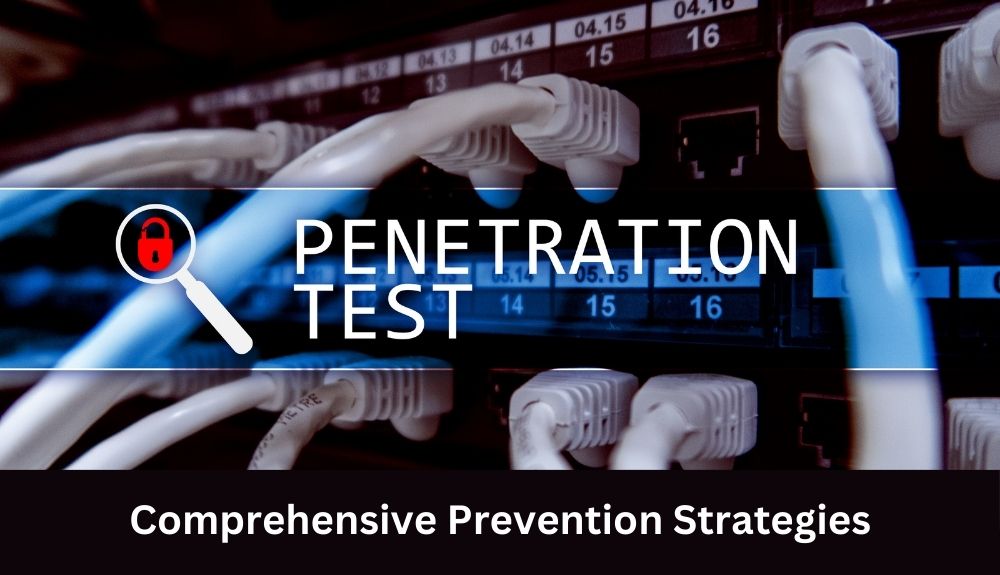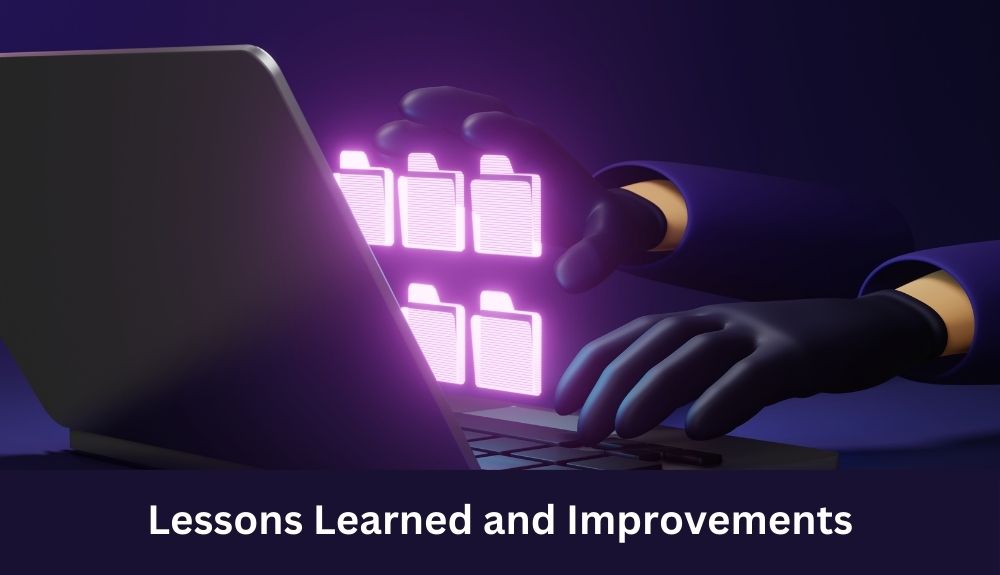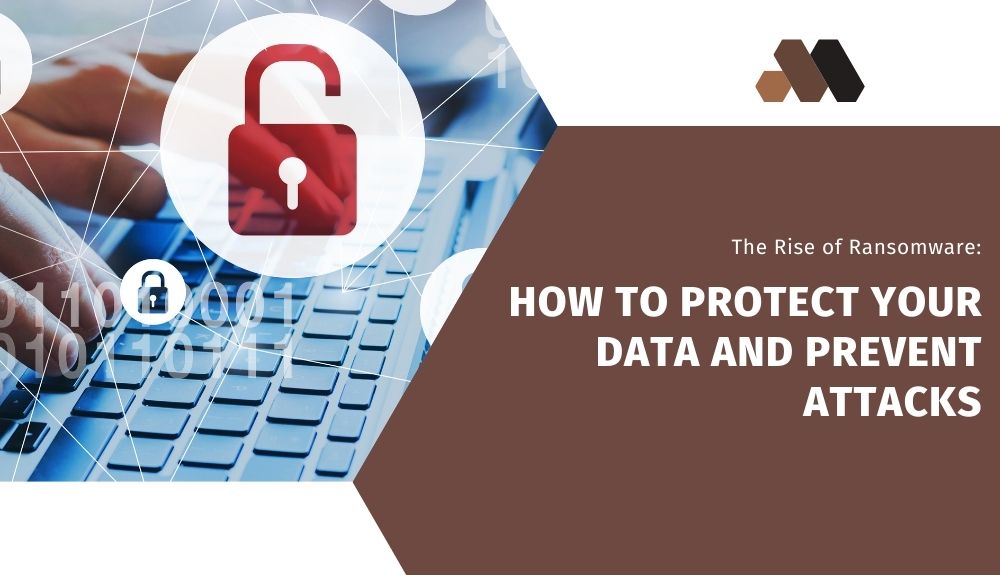In a world where cyber threats are constantly evolving, ransomware attacks have emerged as a pervasive and highly damaging menace. These attacks target organizations of all sizes, encrypting valuable data and holding it hostage until a ransom is paid. The consequences of a successful ransomware attack can be devastating, leading to significant financial losses, reputational damage, and potential legal implications.
But fear not, for there are ways to protect your data and prevent these attacks. This blog will serve as your comprehensive guide to understanding the rise of ransomware and equipping yourself with the knowledge and strategies necessary to safeguard your organization.
Throughout this article, we’ll explore the exponential rise of ransomware attacks, the common entry points utilized by threat actors, and the intricate landscape of ransomware software. We’ll delve into the importance of comprehensive training, regular software updates, and the implementation of a robust communication strategy. Additionally, we’ll discuss proactive measures such as data backup, patch management, and incident response planning.
Join us as we navigate this treacherous terrain and empower ourselves with the tools and strategies to combat ransomware attacks. Together, we can fortify our defenses and ensure that our critical data remains secure. Don’t let the fear of ransomware hold you hostage – take a stand and protect what matters most.
Introduction to Ransomware Attacks
Ransomware attacks have emerged as one of the most significant cybersecurity threats in recent years. These malicious incidents involve cybercriminals infiltrating computer systems, encrypting valuable data, and demanding a ransom for its release. The exponential rise of ransomware attacks has put organizations of all sizes and industries at risk, highlighting the need for stringent preventive measures and effective mitigation strategies.
The impact of ransomware attacks can be devastating, resulting in significant financial losses, reputational damage, and operational disruptions. Cybercriminals often exploit common vulnerabilities, such as outdated software, weak passwords, and social engineering tactics, to gain unauthorized access to systems and deploy ransomware. Once infected, organizations face the daunting task of either paying a substantial ransom to regain access to their critical data or attempting to recover through backups and incident response measures.
To combat this evolving threat landscape, organizations must adopt a comprehensive and proactive approach to ransomware prevention. This includes regular software updates, robust authentication practices, and comprehensive training programs for employees to recognize and prevent social engineering attacks. Moreover, organizations should implement incident response plans and maintain regular backups of critical data to ensure a swift recovery in the event of an attack.
By staying vigilant and implementing a multi-layered defense strategy, organizations can significantly reduce their vulnerability to ransomware attacks. In the next sections, we will explore various preventive measures, recovery plans, and valuable lessons to enhance cybersecurity against ransomware threats.
Common Vulnerabilities Exploited by Ransomware Attacks
Ransomware attacks exploit various vulnerabilities within an organization’s security infrastructure. By understanding these common weak spots, you can better protect your data from falling victim to such attacks. Here are some entry points frequently targeted by ransomware attackers:
1. Outdated Software: Running outdated software leaves your systems vulnerable to known security flaws. Regularly update all software, including operating systems and applications, to patch any identified vulnerabilities.
2. Weak Passwords: Weak or easily guessable passwords make it easier for attackers to gain unauthorized access. Enforce strong password policies, requiring both complexity and regular updates.
3. Social Engineering: Ransomware attackers often employ social engineering techniques to trick unsuspecting users into downloading malicious software. Educate your employees about recognizing phishing emails, suspicious links, and fraudulent requests.
Preventing ransomware attacks requires a comprehensive security approach that addresses these vulnerabilities. By actively addressing outdated software, strengthening passwords, and providing regular training on social engineering threats, you can significantly reduce the risk of a successful ransomware attack. Stay vigilant and regularly update your security protocols to stay one step ahead of cybercriminals.
Comprehensive Prevention Strategies

Protecting your organization from ransomware attacks requires proactive measures and a comprehensive approach. By implementing the following strategies, you can greatly reduce the risk of falling victim to ransomware incidents.
Regular Software Updates
Keeping your software up to date is crucial in preventing ransomware attacks. Vulnerabilities in outdated software can be exploited by attackers to gain unauthorized access to your systems. Regularly install patches and updates provided by software vendors to ensure that any known vulnerabilities are fixed.
Strong Authentication Practices
Implementing strong authentication protocols is essential for safeguarding your organization’s data. Require employees to use complex passwords and encourage the use of multi-factor authentication. This adds an extra layer of security by verifying the identity of users through multiple factors such as passwords, biometrics, or security tokens.
Employee Training
Educating employees about the risks and best practices for cybersecurity is vital in preventing ransomware attacks. Offer comprehensive training sessions that cover topics such as identifying phishing emails, practicing safe browsing habits, and recognizing social engineering techniques. Encourage employees to report any suspicious emails or activities to the IT department.
Data Backup
Regularly backing up your critical data is essential in mitigating the impact of a ransomware attack. Ensure that backups are performed regularly and stored offline or on a separate network. This protects your data from being encrypted or compromised in the event of an attack, allowing you to restore your systems and continue operations efficiently.
Network Segmentation
Segmenting your network can help contain and minimize the spread of ransomware in case of an incident. By separating critical systems and data from less sensitive areas, you can limit the potential damage caused by an attack. Implement firewalls and access controls to restrict unauthorized access between network segments.
Incident Response Planning
Developing a comprehensive incident response plan is crucial for effectively handling a ransomware attack. Establish clear communication channels, roles, and responsibilities within an incident response team. Define the steps and procedures to be followed in the event of an attack, including isolating affected systems, conducting forensic analysis, restoring from backups, and ensuring legal and regulatory compliance.
Remember, prevention is always better than remediation when it comes to ransomware attacks. By implementing these proactive measures, you can significantly reduce the risks and protect your organization’s valuable data from falling into the hands of cybercriminals.
Post-infection Recovery Plans
Recovering from a ransomware incident requires a well-structured and coordinated response to minimize the impact and restore normal operations swiftly. This section will outline the essential steps that organizations should follow in their recovery efforts. By diligently following these post-infection recovery plans, you can effectively mitigate the damage caused by a ransomware attack.
Incident Response Team Activation
The first step in the recovery process is to activate your incident response team. This team should consist of key personnel from various departments, including IT, security, legal, and communications. Their primary role is to coordinate and execute the necessary actions required to contain the incident and recover the affected systems.
Isolation of Affected Systems
To prevent the further spread of ransomware, it is crucial to isolate the affected systems. This involves disconnecting them from the network to minimize the potential impact on other connected devices. By isolating the infected systems, you can limit the attacker’s ability to access or encrypt additional files.
Forensic Analysis
Conducting a thorough forensic analysis is essential in understanding the scope and nature of the ransomware attack. This analysis helps identify the entry point and vulnerabilities exploited by the attacker, enabling you to address these weaknesses and prevent similar incidents in the future. Engage qualified cybersecurity professionals or forensic experts to assist with this investigation.
Restoration from Backups
Having regular backups of your critical data is paramount for successful recovery. Once the affected systems have been isolated and secured, restore the affected files from clean backups. Ensure that your backups have not been compromised and verify their integrity before proceeding with the restoration process.
Legal and Regulatory Compliance Measures
A ransomware attack may have legal and regulatory implications, depending on the type of data compromised. It is essential to engage legal counsel to navigate any legal requirements, such as reporting the incident to law enforcement agencies or regulatory bodies. Compliance with data protection laws and breach notification requirements is crucial during the recovery process.
Effective Communication Strategies
Maintaining clear and consistent communication is vital during the recovery phase. Develop a communication strategy that outlines the appropriate messages to be shared with internal stakeholders, external partners, customers, and regulatory authorities. Timely and transparent communication helps build trust and demonstrates your commitment to resolving the situation.
In conclusion, recovering from a ransomware incident involves activating an incident response team, isolating affected systems, conducting forensic analysis, restoring from backups, ensuring legal compliance, and implementing effective communication strategies. By following these post-infection recovery plans diligently, organizations can minimize the impact of ransomware attacks and restore normal operations with minimal disruption.
Lessons Learned and Improvements

When it comes to ransomware attacks, the lessons learned from past experiences can be invaluable in strengthening our prevention and mitigation efforts. Reflecting on the insights gained from dealing with such incidents, we can enhance our cybersecurity measures and better protect our valuable data.
One key lesson is the importance of regular software updates. Outdated software often serves as an entry point for ransomware attackers. By promptly installing patches and updates, we can close vulnerabilities and reduce the risk of exploitation. It’s also crucial to implement a robust password policy and strong authentication practices. Weak passwords give cybercriminals an easy way into our systems, making it essential to enforce complex and unique passwords, as well as multi-factor authentication.
Another vital consideration is employee training. Cybersecurity awareness programs and regular training sessions help create a proactive security culture within the organization. Educating employees about recognizing phishing attempts, suspicious emails, and other social engineering techniques can significantly reduce the chance of successful ransomware attacks.
Furthermore, having regular backups of critical data is a must. In the event of an attack, having up-to-date backups can minimize the impact and enable restoration without paying a ransom. It is essential to store backups securely and periodically test their integrity.
Additionally, establishing an incident response plan is crucial. By having a detailed strategy in place, including the activation of an incident response team, isolation of affected systems, forensic analysis, and communication protocols, organizations can respond swiftly and effectively when faced with a ransomware incident.
Lastly, continuous monitoring and staying informed about the evolving landscape of ransomware threats is essential. Keeping up with the latest trends and techniques used by threat actors allows for proactive adjustments in security controls and ensures readiness against emerging vulnerabilities.
By incorporating these lessons learned into our prevention and mitigation efforts, we can better protect our organizations and mitigate the impact of future ransomware attacks.
Conclusion
In conclusion, protecting your organization’s data from ransomware attacks is paramount in today’s digital landscape. By implementing proactive measures and adopting a vigilant mindset, you can greatly reduce the risk of falling victim to these malicious incidents.
Throughout this comprehensive guide, we have discussed various prevention strategies and mitigation techniques to safeguard your valuable information. Here are the key takeaways:
1. Regular Software Updates: Keeping your systems and applications up to date is crucial as it helps patch vulnerabilities that attackers may exploit.
2. Strong Authentication Practices: Implementing strict password policies, multi-factor authentication, and privileged access management (PAM) solutions adds an extra layer of security.
3. Employee Training: Comprehensive training sessions on cybersecurity best practices, social engineering awareness, and safe browsing habits help your staff become the first line of defense against ransomware attacks.
4. Data Backup: Regularly backing up critical data to offline or cloud storage ensures that you have a copy of your information in case of a ransomware incident.
5. Incident Response Planning: Having a well-defined incident response plan in place enables swift action, facilitates effective communication, and aids in the forensic analysis of the attack.
6. Continuous Monitoring: Implementing robust monitoring solutions helps detect and mitigate threats before they escalate into full-blown ransomware attacks.
Remember, the threat landscape continues to evolve, and cybercriminals constantly adapt their tactics. Therefore, it is crucial to remain updated on the latest trends, adopt a proactive approach, and continuously improve your defenses against ransomware attacks.



